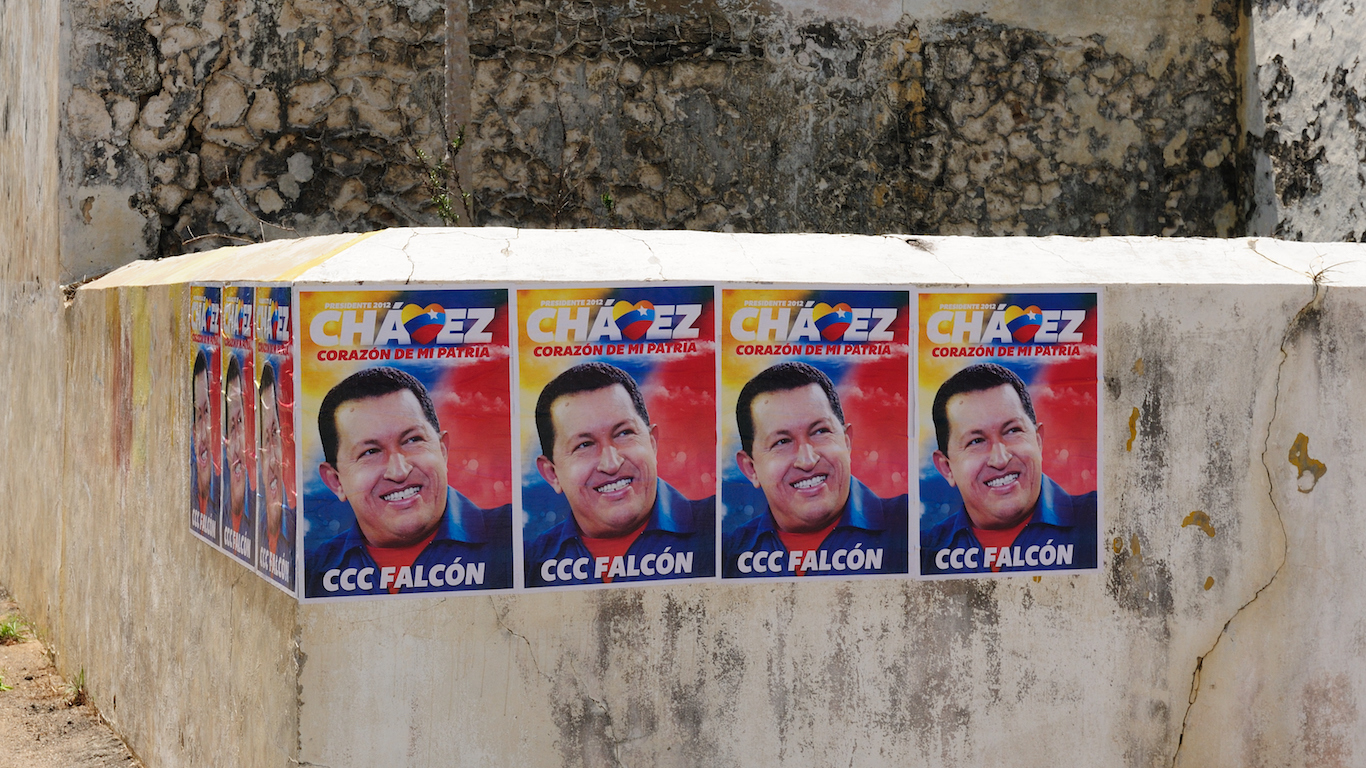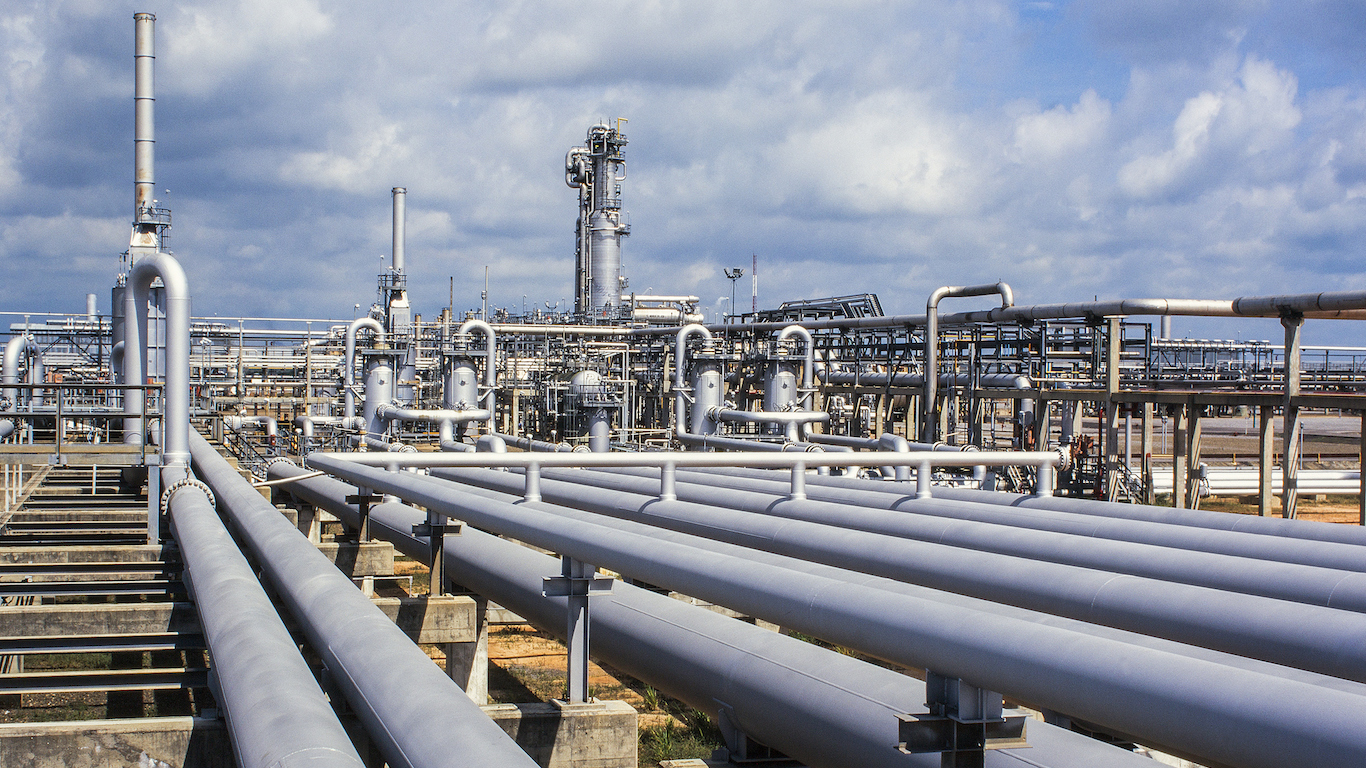
While some U.S. economists fret that the country’s inflation rate is going to zoom past the Federal Reserve’s 2% target any day now, that amount of inflation is insignificant numerically to Venezuela’s coming inflation rate of 1,000,000%. How is that even possible?
The International Monetary Fund’s (IMF) Alejandro Werner, director of the Fund’s Western Hemisphere department, included the astounding projection in an IMF blog post Monday “to signal that the situation in Venezuela is similar to that in Germany in 1923 or Zimbabwe in the late 2000’s.” The IMF’s official April estimate for Venezuelan inflation this year is 13,860%.
Werner explains:
We expect the government to continue to run wide fiscal deficits financed entirely by an expansion in base money, which will continue to fuel an acceleration of inflation as money demand continues to collapse.
The IMF expects Venezuela’s economy (measured in real GDP) to shrink by 18% this year, the third consecutive year that the country has suffered double-digit declines. And that may not be the worst of it:
The collapse in economic activity, hyperinflation, and increasing deterioration in the provision of public goods (health care, electricity, water, transportation, and security) as well as shortages of food at subsidized prices have resulted in large migration flows, which will lead to intensifying spillover effects on neighboring countries.
Venezuela is the poster child for a resource-rich country where political decisions are close to killing the goose that lays golden eggs. The country has the largest proved oil reserves on earth, but production is collapsing because the country’s national oil company, Petróleos de Venezuela, has been starved for the cash needed to support operation.
Venezuela’s crude oil is a heavy, sour (sulfurous) grade that requires substantial processing before it’s able to be sold, making the cost of getting the stuff out of the ground far higher than the costs for lifting crude from the Permian Basin or Saudi Arabia’s Al-Ghawar. In March the U.S. Energy Information Administration (EIA) reported that Venezuelan crude oil production had dropped by 700,000 barrels a day between January 2016 and January 2018. The agency expects the declines to continue through next year.
Werner’s blog post, “Outlook for the Americas: A Tougher Recovery,” notes continued strong growth in the United States as “benefiting the economies in the region with close ties to it,” if any such still exist. Here are a few highlights from his comments on other Western Hemisphere economies:
- Argentina: Growth slows to 0.4% this year, with a gradual recovery in 2019 and 2020.
- Brazil: Growth of 1.8% in 2018, rising to 2.5% in 2019.
- Chile: Growth estimate increased from 3.4% to 4.8%.
- Colombia: Growth of 2.7% this year, rising to 3.6% in 2019.
- Peru: Growth rises to 3.7% in 2018 and reaches 4.1% next year.
- Mexico: Growth of 2.3% this year and 2.7% next year, as the NAFTA negotiations have held down the 2019 forecast.
Excluding Venezuela, the total South American economy is forecast to rise by 2.1% in 2018 and 2.7% in 2019. With Venezuela included, the 2018 increase drops to 1.1% and the 2019 increase falls to 2.4%.
Get Ready To Retire (Sponsored)
Start by taking a quick retirement quiz from SmartAsset that will match you with up to 3 financial advisors that serve your area and beyond in 5 minutes, or less.
Each advisor has been vetted by SmartAsset and is held to a fiduciary standard to act in your best interests.
Here’s how it works:
1. Answer SmartAsset advisor match quiz
2. Review your pre-screened matches at your leisure. Check out the advisors’ profiles.
3. Speak with advisors at no cost to you. Have an introductory call on the phone or introduction in person and choose whom to work with in the future
Thank you for reading! Have some feedback for us?
Contact the 24/7 Wall St. editorial team.
 24/7 Wall St.
24/7 Wall St.

